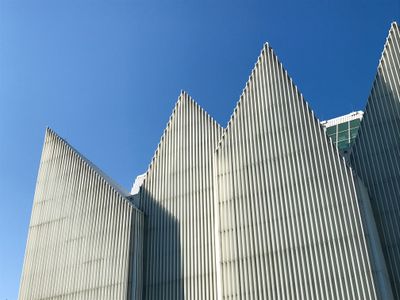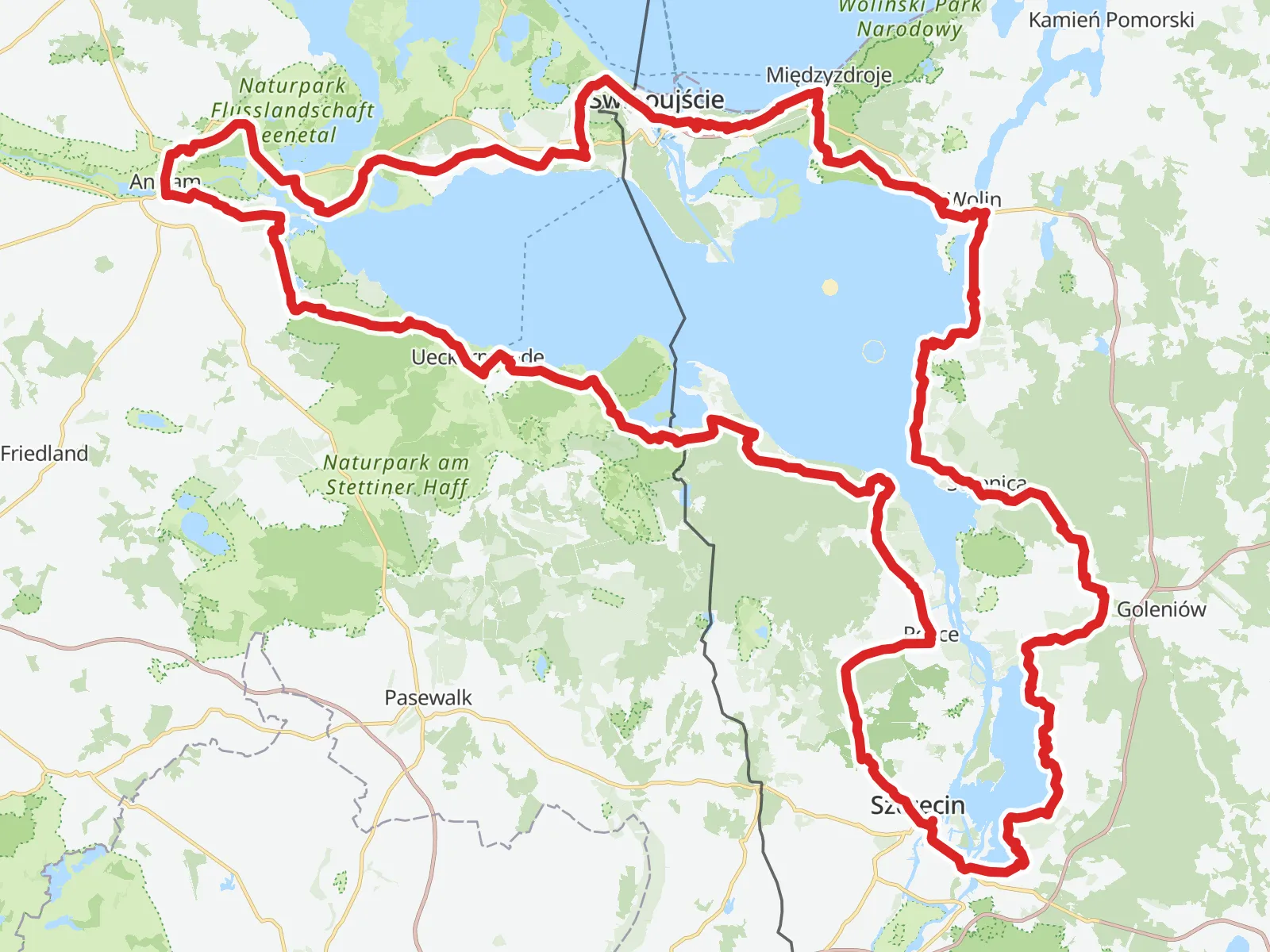Cycling routes in West Pomerania
West Pomerania is a true paradise for cyclists. It's worth taking trips along the picturesque trails along the Baltic Sea, through forests, lakes, and charming towns. The trails marked out in this region lack large elevations, so everyone will find something for themselves. We especially recommend rides along sections of cycling routes along the Baltic Sea, the area around the Szczecin Lagoon, and the tranquil Drawski Landscape Park.
Western Pomerania is one of the regions in Poland that is developing its network of cycling routes the fastest. Cycling routes in West Pomerania have been designed to connect with each other, which allows planning a route according to your own needs and preferences. In many places, new sections of cycling paths are being built every year.
Undoubtedly, the jewel among the cycling routes in Western Pomerania is Velo Baltica, but there is no shortage of interesting options in other parts of the province as well. Each of the trails has a slightly different character and allows you to discover the treasures of the West Pomeranian Voivodeship.
The most interesting cycling routes in West Pomerania:
1. Velo Baltica - EuroVelo 10/13 - R10 (244 km)
Velo Baltica is the part of the international R10 route in Poland, which runs along the Baltic Sea coast. Its Polish part measures nearly 540 km, and the stage in the West Pomeranian Voivodeship - 224 km. The route leads through nature reserves, forests, near lakes, always close to the Baltic coast, which means that in summer you can plan a rest on the beach or a quick swim at any time. Velo Baltica in West Pomerania is a cycling route that is suitable for both a one-day family trip during your stay at the Polish seaside, as well as a multi-day cycling expedition. The route is well-prepared in terms of surface, markings, and accommodation and dining facilities.
It's best to start your ride in Świnoujście. Cyclists have the opportunity to see Międzyzdroje along the way, including the pier, the Avenue of Stars, and the oceanarium. The trail continues through the Wolin National Park and past Wrzosowska Bay. On the route, it's also worth visiting the ruins of the church in Trzęsacz or lighthouses, like the one in Kołobrzeg.
It's worth keeping in mind that during the summer season, the section of the route between Kołobrzeg and Mielno can be very crowded. After Mielno, the trail moves away from the Baltic coast and is a bit calmer.

2. Old Railway Trail (195 km)
Formally, the route starts in Kołobrzeg and ends in Greater Poland, in the small town of Skrzatusz, near Piła. As the name suggests, the trail was intended to follow the former narrow-gauge railway line. Currently, the fully ready and well-marked section leads from Białogard to Złocieniec. A comfortable cycling path connects the distance between Kołobrzeg and Karlin. Along the way, it's worth planning time to visit numerous palaces, interesting churches, former railway stations, and most importantly, time for a stop surrounded by wild nature.
The route following the railway, with remains of former stations, runs along several sections, but it also follows public roads with low and medium traffic intensity. Construction of the Old Railway Trail has not yet been fully completed, but work is ongoing and further sections of dedicated cycle paths are to be successively opened for use. Thanks to the route being marked along an old railway track, it features small and gentle elevations, making it an excellent destination for relaxing outings and family expeditions.

One of the greatest assets of the trail is the Drawski Landscape Park. Although located in seemingly lowland terrain, it can sometimes provide experiences reminiscent of mountain hiking. Rich in numerous lakes and peat bogs, it helps to take in peace and fresh air.
Most of the route is covered with asphalt or gravel. The most difficult part is the last 10-kilometer section, which is dominated by roads through fields. In Złocieniec, the Old Railway Trail connects with the Western Lake District Trail, so it can be used to plan your own cycling trip along several West Pomeranian trails.

There is also a second variant of the Old Railway Trail, which leads from Mielno to Białogard through Koszalin.
3. Cycling route around the Szczecin Lagoon (296 km)
The cycling route around the Szczecin Lagoon (Stettiner Haff Rundweg) is a Polish-German cycling route circling the famous lagoon in a loop about 300 km long.
The official start of the route is in Szczecin, but given that it forms a closed loop, you can start your ride at any point. The eastern part completely overlaps with the Blue Velo route, with many sections running with a direct view of the waters of Lake Dąbie and the Szczecin Lagoon. About 110 km of the eastern part of the route runs on the German side, including through the island of Usedom. The western part of the trail partially overlaps with the long-distance Oder-Neisse trail, running along the entire Polish-German border. In the north, the route connects with Velo Baltica.
The route partially runs along the shores of the Lagoon, while in other places it crosses field and forest areas, especially in the Wolin National Park, rich in beech trees. During the trip, it's worth planning to visit Szczecin, Międzyzdroje, Świnoujście, or Wolin, and on the German side: Anklam and Ueckermünde.
The trail surface consists of gravel roads, cycle paths, and public roads with low traffic intensity.

4. Blue Velo (266 km)
Blue Velo is a West Pomeranian cycling route with a length of 266 km, which connects the Baltic Sea with Kostrzyn on the Oder. It starts in Świnoujście, from where it reaches Szczecin, bypassing the Szczecin Lagoon from the east. On this section, Blue Velo overlaps with the trail around the Szczecin Lagoon. In Szczecin, Blue Velo runs alone all the way to Kostrzyn on the Oder, known, among others, for the Pol'and'Rock Festival (formerly Woodstock), where it connects with the Oder-Neisse trail and two trails in the Lubuskie Voivodeship.
The route is rich in attractions, including castles, old water mills, and vineyards, for which Lubusz Land is famous. Due to incomplete markings, it's better to use navigation. You can download the Blue Velo GPX file from the trail's page on Velomap. After leaving Gryfino, the terrain becomes slightly more hilly, which you can notice by analyzing the elevation profile of the trail. On this section, cyclists face a lot of short climbs and descents. For less experienced tourists, the sections between Stepnica and Międzyzdroje, as well as Gryfino and Trzcińsko-Zdrój, are recommended.
Near the 195 kilometer mark of the route, you can turn off onto the Western Lake District Trail.

5. Western Lake District Trail (345 km)
The Western Lake District Trail can be started at the Siekierki bridge located on the Polish-German border. The old railway bridge has been adapted as an element of the cycling route and serves as a viewpoint over the Oder and the remarkable Kostrzyneckie Wetlands. The route runs through Trzcińsko-Zdrój, Choszczno, Drawsko Pomorskie, Borne Sulimowo, Szczecinek, and ends near the town of Miastko.
The trail is still being expanded, so you must account for varying surface conditions and markings depending on the section. The best prepared section is Siekierki – Ińsko, the first 170 km of the route in the southern part. The further part is already recommended for more advanced cyclists due to the poor surface.
The trail leads through as many as five landscape parks. On asphalt cycling roads built on railway routes, we'll visit the Lake Districts: Myśliborskie, Choszczeńskie, Ińskie, Drawskie, and Szczecineckie. In early autumn, you can hear the sounds of the ongoing deer rut. Many bird species also live in numerous wetlands. This is a route leading mainly among nature and small towns hiding local treasures, not very popular, so perfect for lovers of peace, quiet, and the beauty of nature.
The Western Lake District Trail connects with the following trails: Oder-Neisse, Blue Velo, Old Railway Trail, and Greenways - Northern Necklace.





